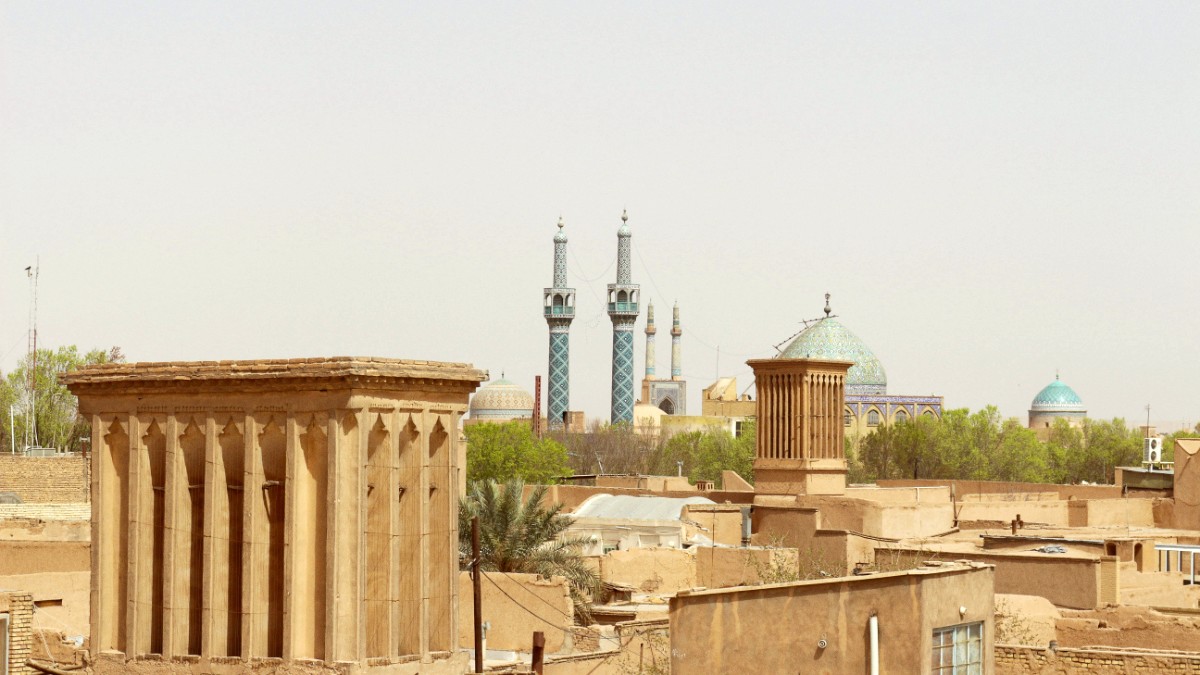
Iran
Yazd's culinary identity is influenced by its desert location. Ingredients that could be stored or grew well in arid conditions became staples, showing a resourceful approach to cooking.
The city is known for its unique sweet pastries and desserts, often utilizing dates, pistachios, and saffron. These sweets are a cornerstone of Yazdi hospitality. Subtle Zoroastrian influences appear in some traditional dishes.
Yazd is especially known for Baghlava, Pashmak (cotton candy), Hajji Badam (almond cookies), and Qottab (deep-fried pastries with walnut filling).
Distinct local specialties include Ash-e Shooli (sour beetroot and lentil soup) and Gheymeh Yazdi (a version of Gheymeh stew, sometimes with chickpeas).
A sour and salty vegetable soup, distinct to Yazd, often served cold in summer for a refreshing local flavor.
A signature Yazdi soup, distinctive for its sour and savory profile, made with beetroot, lentils, and herbs. A comforting staple.
Find it in local eateries and traditional restaurants.
A unique local interpretation of the popular Iranian stew, featuring tender lamb or beef with a distinct blend of local spices.
Available in traditional Iranian restaurants across the city.
Try the local version of grilled meats with saffron rice. Fesenjan is a rich stew with chicken, walnuts, and pomegranate paste.
Kebabs widely available. Fesenjan in mid-range to fine dining traditional restaurants.
Yazdi Baghlava is a layered pastry with nuts and rosewater syrup. Pashmak is an unique cotton candy, often sesame or pistachio flavored.
Hajji Badam are small, crunchy, almond-based cookies. Qottab are deep-fried, crescent-shaped pastries with walnut filling.
For an upscale dining experience in a refined ambiance with classic Persian dishes.
Popular choices offering a good selection of traditional Iranian food in pleasant settings.
Affordable, authentic meals and quick bites at local spots.
International cuisine options are limited in Yazd. The focus is heavily on Iranian cuisine, which is part of the city's charm.
Embrace the local flavors for an authentic experience.
Some larger, modern hotels might offer a few basic international dishes on their menus.
Do not expect extensive international choices.
7:00 AM - 9:00 AM. Light meal: bread, cheese, jam, tea.
1:00 PM - 3:00 PM. Often the main and heaviest meal of the day.
8:00 PM - 10:00 PM or later. Generally lighter than lunch.
Consumed frequently throughout the day, often with sugar cubes.
Wheat is a staple; finding strictly gluten-free options is difficult. Rice dishes (chelo) are generally safe.
Clearly communicate your needs.
Communicating complex allergies (e.g., nuts) is very difficult due to language barriers and less awareness.
Carry an allergy card translated into Persian (Farsi).
Breakfast (7-9 AM), Lunch (1-3 PM - main meal), Dinner (8-10 PM - lighter).
Ash-e Reshteh (noodle soup) is popular during Nowruz (Persian New Year) and other special occasions.
Do not miss the unique Yazdi sweets like Baghlava, Pashmak, and Qottab. They are a true taste of the city.
Iranians are incredibly hospitable. You may receive invitations for tea or informal meals; these are opportunities for genuine cultural exchange.
Explore the Yazd Bazaar not just for shopping but also to observe local food culture, spices, and ingredients.
These are social hubs where locals gather for tea and conversation. A good place to observe daily life.
Consider trying local sweets with your tea.
If you have an opportunity for a homestay or are invited by a local, embrace the experience. This provides the most authentic culinary insight.
It is an honor to be a guest in an Iranian home.
Sample local cheeses often served with breakfast or alongside fresh herbs and bread.
Fresh herbs are a staple with every meal, typically eaten raw alongside bread and cheese.
Experience various types of freshly baked Iranian bread like Sangak, Barbari, or Lavash, fundamental to any meal.
Alcoholic beverages are strictly prohibited and illegal in Iran. Do not expect to find or consume alcohol during your visit.